TYPE DESIGN INFORMATION PAGE last updated on Mon Sep 29 12:06:49 EDT 2025
FONT RECOGNITION VIA FONT MOOSE
|
|
|
|
|
Telugu fonts | ||
|
|
|
|
SWITCH TO INDEX FILE
Free Telugu truetype font APNews (or: Andhra Prabha News) at the Andhra Prabha Daily. Alternate URL. [Google] [More] ⦿ | |
Free truetype fonts (ISFOG family) for Hindi, Marathi, Nepali, Gujarati, Tamil, Punjabi, Bengali, Assamese, Telugu, Malayalam, Kannada, Oriya. [Google] [More] ⦿ | |
Appaji Ambarisha Darbha
| |
Elk Grove Village, IL-based company established in 2004, which specializes in font development, licensing and IP protection. It rose from the ashes of a major fire at Agfa/Monotype at the end of 2003. Its founders are Steve Matteson (type designer, formerly with Agfa/Monotype), Thomas Rickner (of Microsoft fame, where he hinted many Microsoft families), Ira Mirochnick (founder and President of Monotype Typography Inc in 1989 (where he was until 2000) and a Senior Vice President and director of Agfa Monotype Corporation (2000-2003), a self-proclaimed expert in font licensing issues and IP protection), and Bill Davis (most recently the Vice President of Marketing for Agfa Monotype). Also included in this group are Josh Hadley, Brian Kraimer, Jim Ford (since 2005), and Jeff Finger (as Chief Research Scientist, since 2006). On December 8, 2010, Ascender was acquired by Monotype for 10.2 million dollars. Their typefaces include Endurance (2004, Steve Matteson, an "industrial strength" Grotesk designed to compete with Helvetica and Arial; it supports Greek, Cyrillic and East European languages). In April 2005, Ascender announced that it would start selling the Microsoft font collection, which is possibly their most popular collection to date. They also started selling and licensing IBM's Heisei family of Japanese fonts in April 2005: Heisei Kaku Gothic, Heisei Maru Gothic and Heisei Mincho. Ascender's version of the CJK font Heiti is called ASC Heiti. Also in 2005, they started distributing Y&Y's Lucida family. In October 2005, Ascender announced the development of Convection, a font used for Xbox 360 video games. Their South Asian fonts cover Bengali, Devanagari, Gujarati, Gurmukhi, Kannada, Malayalam, Tamil and Telugu, and include Ascender Uni, Ascender UniDuo and Arial Unicode for general use across all Indic languages, and, in particular, the Microsoft fonts Vrinda (Bengali), Mangal (Devanagari), Shruti (Gujarati), Raavi (Gurmukhi), Tunga (Kannada), Kartika (Malayalam), Latha (Tamil) and Gautami (Telugu). Khmer SBBIC (2011) is a Khmer font at Open Font Library. It does more type trading and licensing than type creation, although Steve Matteson has contributed fairly well to their new typefaces. Their brand value took a hit when they started selling scrapbook, handwriting and wedding fonts under the name FontMarketplace.com. Recent contributions: Crestwood (2006, a house face, possibly by Steve Matteson) is an updated version of an elegant semi-formal script typeface originally released by the Ludlow Type Foundry in 1937. In 2009, they started a subpage called GoudyFonts.Com to sell their Goudy revivals. In 2010, they announced a new collection of OpenType fonts created specifically for use in Microsoft Office 2010: Comic Sans 2010 (including new italic and bold italic fonts), Trebuchet 2010 (including new black&black italic fonts), Impact 2010, Pokerface 2010, Rebekah 2010 and Rebus Script 2010. Ligatures in Comic Sans? View Ascender's typefaces. [Google] [MyFonts] [More] ⦿ | |
Baloo
| Baloo is a free display font available in nine Indian scripts along with Latin. Included are Baloo-Devanagari, BalooBhai-Gujarati, BalooTammudu-Telugu, BalooBhaina-Odia (Oriya), BalooChettan-Malayalam, BalooDa-Bangla, BalooPaaji-Gurmukhi, BalooTamma-Kannada, and BalooThambi-Tamil. The project's leader is Girish Dalvi, and the project is in the hands of Ek Type. Type design help came from Ek Type, and in particular from Ek Type's Sarang Kulkarni (for Devanagari) and Noopur Datye (for Baloo Da-Bangla). Maithili Singre helped with Malayalam. Baloo Bhai was designed by Supriya Tembe and Noopur Datye. Baloo Thambi is designed by Aadarsh Rajan. Google Fonts link. Baloo 2 (2021) consists of ten font families with unique local names for each of the nine Indic scripts plus Arabic (Baloo Bhaijaan 2, by Sanskriti Dholi and Noopur Datye). Each family supports one Indic/Arabic script plus Latin, Latin Extended, and Vietnamese. The Gurmukhi is designed by Shuchita Grover; Bangla by Noopur Datye and Sulekha Rajkumar; Odia by Yesha Goshar, Manish Minz, and Shuchita Grover; Gujarati by Noopur Datye and Supriya Tembe; Kannada by Divya Kowshik and Shuchita Grover; Telugu by Maithili Shingre and Omkar Shende; Malayalam by Maithili Shingre and Unnati Kotecha; and Tamil by Aadarsh Rajan. Baloo Devanagari and Latin are collaboratively designed by Ek Type. Font engineering and type design assistance by Girish Dalvi. [Google] [More] ⦿ |
Blancoletters
|
For his graduation work in the Masters of Type Design program of the University of Reading, Juan Luis Blanco (Spain) created the Latin, Greek, Cyrillic, Tifinagh, Arabic typeface family Amaikha (2014). Amaikha is characterized by Latin warmth and roundness. A list of his typefaces:
Speaker at ATypI 2016 in Warsaw on A Typographic Maghribi Trialogue. In this talk, he explains, together with Laura Meseguer and Krystian Sarkis, the Typographic Matchmaking in the Maghrib project of the Khatt Foundation, which tries to facilitate a cultural trialogue as well as shed a typographic spotlight on the largely ignored region of the Maghreb in terms of writing and design traditions. The specific goal of the collaboration is the research and development of tri-script font families (for Latin, Arabic and Tifinagh) that can communicate harmoniously. [Google] [MyFonts] [More] ⦿ |
Site with fonts representing all Indic scripts (all made by C-DAC, Pune): AS-TTDurga-Normal, BN-TTDurga-Normal, DV1-TTYogesh-Normal, DV-TTYogesh-Normal, GJ-TTAvantika-Normal, KN-TTUma-Normal, ML-TTKarthika-Normal, OR-TTSarala-Normal, PN-TTAmar-Normal, TL-TTHemalatha-Normal, TM-TTValluvar-Normal. [Google] [More] ⦿ | |
| |
Free Telugu fonts made in 2005: GIST-TLOTAmruta-Bold, GIST-TLOTAmruta-BoldItalic, GIST-TLOTChandana-Bold, GIST-TLOTChandana-BoldItalic, GIST-TLOTDeva-Italic, GIST-TLOTDeva-Normal, GIST-TLOTDraupadi-Italic, GIST-TLOTDraupadi-Normal, GIST-TLOTPriya-Bold, GIST-TLOTPriya-BoldItalic, GIST-TLOTRajan-Bold, GIST-TLOTRajan-BoldItalic, GIST-TLOTSanjana-Bold, GIST-TLOTSanjana-BoldItalic, GIST-TLOTSwami-Bold, GIST-TLOTSwami-BoldItalic, GISTTLOTAmmaBold, GISTTLOTAmmaBoldItalic, GISTTLOTAmmaItalic, GISTTLOTAmmaNormal, GISTTLOTAtreyaBold, GISTTLOTAtreyaBoldItalic, GISTTLOTAtreyaItalic, GISTTLOTAtreyaNormal, GISTTLOTDraupadiBold, GISTTLOTDraupadiBoldItalic, GISTTLOTGolkondaBold, GISTTLOTGolkondaBoldItalic, GISTTLOTKrishnaBold, GISTTLOTKrishnaBoldItalic, GISTTLOTKrishnaItalic, GISTTLOTKrishnaNormal, GISTTLOTManuBold, GISTTLOTManuBoldItalic, GISTTLOTManuItalic, GISTTLOTManuNormal, GISTTLOTMenakaBold, GISTTLOTMenakaBoldItalic, GISTTLOTMenakaItalic, GISTTLOTMenakaNormal, GISTTLOTPavaniBold, GISTTLOTPavaniBoldItalic, GISTTLOTRajaniBold, GISTTLOTRajaniBoldItalic, GISTTLOTSitaraBold, GISTTLOTSitaraBoldItalic, GISTTLOTVennelaBold, GISTTLOTVennelaBoldItalic, GISTTLOTVennelaItalic, GISTTLOTVennelaNormal. In addition, these fonts can also be found here: AkrutiTlgBalajiBold, AkrutiTlgBalajiNormal, AkrutiTlgGodavariBold, AkrutiTlgGodavariNormal, AkrutiTlgRaginiBold, AkrutiTlgRaginiNormal, AkrutiTlgSaralaBold, AkrutiTlgSaralaNormal, AkrutiTlgVishwasNormal, Pothana2000, Pothana2000, GIST-TLOTDeva-Normal. [Google] [More] ⦿ | |
Font archive at Swedish University Network SUNET, mirrored from cica. Has a Bengali font, a Telugu font, a Tamil font, a Tarot font, Sanskrit font and several Cyrillic fonts. [Google] [More] ⦿ | |
Company in Mumbai (with offices in Bangalore) that made these Malayalam fonts: AkrutiMal1, AkrutiMal2 (2002). They also created the Kannada font LangscapeKndPadma. Here, you can download their Devanagari family Gargi, and their Gujarati font family Padmaa. They also made the well-known Akruti font family which can be downloaded here: AkrutiBng2Bold, AkrutiBng2Normal, AkrutiDev2Normal, AkrutiGuj1Normal, AkrutiGujL1Bold, AkrutiKnd1Bold, AkrutiKnd1Normal, AkrutiMal2Bold, AkrutiMal2Normal, AkrutiOri1Bold, AkrutiOri1Normal, AkrutiPnj2Bold, AkrutiPnj2Normal, AkrutiTlg2Bold, AkrutiTlg2Normal, AkrutiTml1Bold, AkrutiTml1Normal. These fonts cover Devanagari, Gujarati, Telugu, Tamil, Malayalam, Kannada, Bengali, Oriya, and Gurumukhi. [Google] [More] ⦿ | |
Free Indic fonts that come with Debian:
| |
Elmar Kniprath
| |
Elmar Kniprath
| |
Elmar's Indic
| A free package by Elmar Kniprath (2001) for writing Assamese, Bengali, Gujarati, Hindi, Kannada, Malayalam, Marathi, Nepali, Panjabi, Rajasthani, Sanskrit, Sinhalese, Tamil, Telugu and Latin transliteration. Fonts included are e-Asamiya, e-Bengali, e-Gujarati, e-IndicSerif-Bold, e-IndicSerif, e-Kannada, e-Latin, e-Malayalam, e-Nagari, e-Panjabi, e-Sinhala, e-Tamil, e-Telugu. Download page. [Google] [More] ⦿ |
The free software foundation of India, in conjunction with Cyberscape Multimedia Limited, Bangalore (developers of Akruti Software for Indian Languages) have released a set of TTF fonts for nine Indian scripts (Devanagari, Gujarati, Telugu, Tamil, Malayalam, Kannada, Bengali, Oriya, and Gurumukhi) under the GNU General Public License (GPL). Direct download page. Font names: AkrutiBng1Normal, AkrutiBng2Bold, AkrutiBng2Bold, AkrutiBng2Normal, AkrutiDev1Bold, AkrutiDev1Normal, AkrutiDev2Normal, AkrutiGuj1Bold, AkrutiGuj1Normal, AkrutiGuj2Bold, AkrutiGuj2Normal, AkrutiKnd1Bold, AkrutiKnd1Normal, AkrutiKnd2Bold, AkrutiKnd2Normal, AkrutiMal1Bold, AkrutiMal1Normal, AkrutiMal2Bold, AkrutiMal2Normal, AkrutiMal2Normal, AkrutiOri1Bold, AkrutiOri1Normal, AkrutiOri2Bold, AkrutiOri2Normal, AkrutiPnj1Bold, AkrutiPnj1Normal, AkrutiPnj2Bold, AkrutiPnj2Normal, AkrutiTlg1Bold, AkrutiTlg1Normal, AkrutiTlg2Bold, AkrutiTlg2Normal, AkrutiTml1Bold, AkrutiTml1Bold, AkrutiTml1Normal, AkrutiTml1Normal, AkrutiTml2Bold, AkrutiTml2Bold, AkrutiTml2Normal, AkrutiTml2Normal. [Google] [More] ⦿ | |
Gandhiji Font
|
|
Gautami
| Gautami is an OpenType font for Telugu. It is based on Unicode, contains TrueType outlines and has been designed for use as a UI font by Raghunath Joshi (type director) and Omkar Shende. It is in the Microsoft font collection since 2001. [Google] [More] ⦿ |
Girish Dalvi
| |
This was a sub-site of C-DAC, India's main commercial font and language software maker. It used to have free Tibetan and Gujarati fonts. For a while, it offered commercial products for all Indic languages, including Tibetan and Nepali. Then, finally, it went the way of all big companies--unreadable pages with hard-to-find stuff, often hidden in PDF files. For good old times' sake, here are the font names (published as a courtesy to them--wish they would do this themselves): AS-Abhijit, AS-Amrut, AS-Arbindo, AS-Bidisha, AS-Bipin, AS-Debashish, AS-Durga, AS-Kaali, AS-Kailash, AS-Maya, AS-Mrinal, AS-Parshuram, AS-SantoshItalic, AS-Satyajit, AS-Savita, AS-Shyamal, AS-Sushmita, AS-Tagore, BN-Abhijit, BN-Amrut, BN-Arbindo, BN-Bidisha (see also here), BN-Bipin, BN-Debashish, BN-Durga, BN-Kaali, BN-Kailash, BN-Maya, BN-Mrinal, BN-Parshuram, BN-Santosh, BN-Satyajit, BN-Savita, BN-Shyamal, BN-Sushmita, BN-Tagore, DR-Kunzang, DV-Aakash, DV-Aishwarya, DV-Ajay, DV-Akshar, DV-Alankar, DV-Amruta, DV-Aniket, DV-Anjali, DV-Basant, DV-Bhargav, DV-Bhima, DV-Brinda, DV-Chhaya, DV-Devendra, DV-Dhruv, DV-Diwakar, DV-Gandhar, DV-Ganesh, DV-Hemant, DV-Jamuna, DV-Jayesh, DV-Jivan, DV-Kartik, DV-Kishor, DV-Latika, DV-Madhu, DV-Makarand, DV-Manisha, DV-Manohar, DV-Mayur, DV-Megha, DV-Meghadoot) def, DV-Mohini, DV-Nandan, DV-Natraj, DV-Ninad, DV-Nisha, DV-Prakash, DV-Pramod, DV-Preetam, DV-Purva, DV-Radhika, DV-Raghav, DV-Rahul, DV-Rajashri, DV-Rakesh, DV-Raman, DV-Ranjita, DV-Rohini, DV-Sachin, DV-Sagar, DV-Sajan, DV-Samata, DV-Samir, DV-Sanket, DV-Shalaka, DV-Sharad, DV-Shefali, DV-Shishir, DV-Shital, DV-Shridhar, DV-Shrikant, DV-Subodh, DV-Sumeet, DV-Surekh, DV-Surkhiyan, DV-Sushil, DV-Swapnil, DV-Swaraj, DV-Vallabh, DV-Varun, DV-Vasuki, DV-Vasundhara, DV-Vijay, DV-Vimal, DV-Vinit, DV-Vishakha, DV-Yamini, DV-Yogesh, DV-Yogesh, GJ-Anamika, GJ-Anand, GJ-Avantika, GJ-Balram, GJ-Bela, GJ-Chitra, GJ-Damodar, GJ-Devaki, GJ-Dinakar, GJ-Dwarika, GJ-Dynamic, GJ-Gagan, GJ-Gopika, GJ-Kalpana, GJ-Kamini, GJ-Kanoj, GJ-Kapila, GJ-Kaumudi, GJ-Keshav, GJ-Kirit, GJ-Kishan, GJ-Krishna, GJ-Krishna, GJ-Kusum, GJ-Madan, GJ-Manasi, GJ-Mangal, GJ-Mira, GJ-Mohan, GJ-Mukul, GJ-Nayan, GJ-Nirmal, GJ-Piyush, GJ-Prabha, GJ-Pratik, GJ-Purnima, GJ-Radhey, GJ-Ritesh, GJ-Rohini, GJ-Rohit, GJ-Sabarmati, GJ-Sandeep, GJ-Shila, GJ-Shreedeep, GJ-Shrinath, GJ-Snigdha, GJ-Sucheta, GJ-Sujit, GJ-Swati, GJ-Taapi, GJ-Tara, GJ-Vidya, GJ-Yashoda, ISFOC-BR1, ISFOC-BR2, ISFOC-BR3, ISFOC-BR7, ISFOC-BR8, KN-Basava, KN-Bharat, KN-Brindavan, KN-Chinmaya, KN-Kamala, KN-Kamanna, KN-Kasturi, KN-Kaveri, KN-Nandi, KN-Padmini, KN-Pampa, KN-Pankaj, KN-Radhey, KN-Ragini, KN-Rajani, KN-Rajeshwari, KN-Ranna, KN-Seema, KN-Seema-Light, KN-Seema, KN-Seeta, KN-Shankar, KN-Shravan, KN-Smita, KN-Sumitra, KN-Uma, KN-Vatapi, ML-Aathira, ML-Ambili, ML-Anakha, ML-Anjali, ML-Aparna, ML-Ashtamudi, ML-Aswathi, ML-Atchu, ML-AyilyamBold, ML-BeckalBold, ML-Bhavana, ML-Chandrika, ML-Chithira, ML-Devika, ML-Gauri, ML-Geethika, ML-Gopika, ML-Guruvayur, ML-Indulekha, ML-Jaya, ML-Jyothy, ML-Jyotsna, ML-Kala, ML-Kamini, ML-Kanika, ML-Karthika, ML-Kaumudi, ML-Keerthi, ML-Leela, ML-Malavika, ML-Mammiyoor, ML-Mayoori, ML-Nalini, ML-Nandini, ML-Nanditha, ML-Nila, ML-Onam, ML-Periyar, ML-Pooram, ML-Poornima, ML-Ravivarma, ML-Revathi, ML-Rohini, ML-Sabari, ML-Sankara, ML-Sarada, ML-Sruthy, ML-Sugatha, ML-Suparna, ML-Surya, ML-SwathyBold, ML-Thakazhi, ML-Theyyam, ML-Thiruvathira, ML-Thunchan, ML-Vaisali, ML-Varsha, ML-Vinay, ML-Visakham, ML-Vishu, ML-Yashasri, PN-Amar, PN-Baisakhi, PN-Baljit, PN-Bishan, PN-Chandra, PN-Chetan, PN-Deeler, PN-Dipak, PN-Gurudev, PN-Hira, PN-Jasbir, PN-Jasjit, PN-Jaspal, PN-Jeevan, PN-Joginder, PN-Kanvaljit, PN-Kapil, PN-Karan, PN-Karishma, PN-Kavita, PN-Komal, PN-Manjit, PN-Nanak, PN-Nitu, PN-Pratap, PN-Randhir, PN-Satabir, PN-Sonam, PN-Sukhabir, PN-Sushil, SD-Natraj, SD-Surekh, SH-Harmony, SH-Namal, SY25-Election, SY30-Jain, SY31-Mudras, SY32-Music, TB-Youtso (for Tibetan), TB1-Youtso, TL-Amma, TL-Anuradha, TL-Atreya, TL-Charminar, TL-Godavari, TL-Gurazada-BoIdItalic, TL-Harshapriya, TL-Hemalatha, TL-Krishna, TL-Nannaya, TL-Pratima, TL-Rayancha, TL-Tanmayi, TL-Tikkana, TL-Vennela, TL-Vishaka, TM-Abhirami, TM-Amala, TM-Appar, TM-Archana, TM-Aruna, TM-Arunagiri, TM-Avvai, TM-Bharathi, TM-Chanakya, TM-Chandra, TM-Chetan, TM-Chitra, TM-Gopur, TM-Heena, TM-Hema, TM-Ilango, TM-Kalyani, TM-Kamal, TM-Kamban, TM-Kannadasan, TM-Kapilan, TM-Komala, TM-Krishna, TM-Lalitha, TM-Lathika, TM-Madhu, TM-Madhuram, TM-Nakkeran, TM-Nambi, TM-Neha, TM-Padma, TM-Pattinathar, TM-Poornima, TM-Poovai, TM-Radhika, TM-Rajarajan, TM-Rama, TM-Ramiya, TM-Ratna, TM-Ravindra, TM-Rekha, TM-Seema, TM-Shiva, TM-Sudhir, TM-Swetha, TM-Umesh, TM-Valluvar, TM-Vaman, TM-Venu, TM-Virendra, Tarpobane-Black. [Google] [More] ⦿ | |
Free Kannada, Telugu, Tamil and Sanskrit truetype fonts by C-CAD (Pune): KN-TTUma-Normal, SD-TTSurekh-Normal, TL-TTHemalatha-Normal, TM-TTValluvar-Normal. [Google] [More] ⦿ | |
Lively South Asian type blog covering Bengali, Devanagari, Gujarati, Gurmukhi, Kannada, Malayalam, Oriya, Perso-Arabic, Sinhala, Tamil, Telugu, Tibetan. [Google] [More] ⦿ | |
| |
Jump page for most Indian languages: Telugu, Bengali, Gurmukhi, Oriya, Malayalam, Gujurati, Tamil, Kannada, Sanskrit, Marathi and Hindi. [Google] [More] ⦿ | |
Free Indic OpenType fonts have been released under the GNU General Public License:
| |
Indian language software for Mac and PC by Summit india. Contains fonts (not free) for Hindi, Gurumukhi, Gujarati, Bengali/Assamese, Malayalam, Tamil, Telugu, Punjabi, Kannada and Oriya. PDF file with a catalogue of their fonts. [Google] [More] ⦿ | |
IndicType1
| All the fonts below were converted from Metafont into type 1 by Karel Piska in 2005-2006 using his own tools, METAPOST, FontForge and t1utils. Karel Piska is with the Institute of Physics, Academy of Sciences, Prague.
|
Free software. The IndiX library contains the IndiX shaping engine that converts Indic text in Unicode to Glyphs from OpenType fonts. It does conversions (UTF-8 to UCS-2), tagging of the text with script and syllable, reordering of logical syllables to visual syllables, and conversion of the visual syllable of characters to a renderable syllable of glyphs. IndiX supports nine Indic scripts and comes with the required Saral series of OpenType fonts. Vedic Sanskrit is added. The IndiX library is used in enabling X11 for Indic text and in the IndiX applications, oprint, netprint. 'oprint' is a tool which converts Indic text to PostScript using OpenType font. When you download the package, you can find these free truetype fonts by R.K. Joshi and his team at the Centre for Development of Advanced Computing, Mumbai, all dated 2005:
| |
Indolipi
|
|
InProS (Intellectual Property Solutions)
| Indian language fonts for PC and Mac. There used to be a commercial web page based in Houston, TX, where one could purchase fonts for Hindi [ex: SheelRekha, RoopLekha, Kamal], Gujarati [ex: Shefali, Nita, Anarkali, Agni], Punjabi [ex: Pushpa, Suman, Badal, Arup], Bengali [Jayanti, BornaMala], Tamil, Telugu, Kannada, Sanskrit [ex: Sansipro], Malayalam and Assamese. Fonts for transliteration include Diplomat and MonoPali. HTML editors for these languages as well. Free Om_SuniKanth font. Run by Sunny Kallara. [Google] [More] ⦿ |
As part of the University of Cologne (Germany), the IITS (Institute of Indology and Tamil Studies) published its own truetype font, IITS, which is used for the transliteration of Sanskrit, Pali, Prakrit, Hindi, Marathi, Bengali, Urdu and Dravidian Languages. Other Indian and Tamil fonts can be downloaded too. These include Adhawin-Tamil (K. Srinivasan, 1995), BengaliAssamese Vijay (Vijay K. Patel, 1995), Gayathri (Ethno Multimedia, 1993), Gujarati (Vijay K. Patel, 1996), Janaranjani (EthnoMultimedia, 1993), Kannada Vijay (Vijay K. Patel, 1995), Mantra (Shrikrishna Patil, 1994), Malyalam Vijay (Vijay K. Patel, 1995), Nepali Vijay (Vijay K. Patel, 1994), Progoty (Chetona Software Cafe, 1997), Palladam (T. Govindaraj, 1989-1990), PunjabiSans (Atech, 1991), RK Sanskrit, Tamil Vijay (Vijay K. Patel, 1995), Telugu Vijay (beware: need to type 5 to 7 keys to get one character). [Google] [More] ⦿ | |
Famous Sikh photographer. Designer of the font BJanmeja5A. Free Punjabi font (Janmeja2920a (2002)). Ads for Elfring and Linotype. Other free fonts at the site: JanmejaGujratiNormal JanmejaKanadaNormal JanmejaMalyalamNormal JanmejaOriyaNormal JanmejaSinhalaNormal JanmejahindiThin JanmejaTeluguNormal, all made by him in 1997. [Google] [More] ⦿ | |
Juan Luis Blanco
| |
In 1675, Colbert invites the Acadé'mie des Sciences to make a grand study of all machines used in the arts. In 1696, l'abbé Jaugeon obliges with a study entitled "Etude des Arts de construire les caractères, de graver les poinçons de lettres, d'imprimer les lettres". From 1692 on, Jaugeon created a mathematical/geometric theory of letters, all inscribed in a 48 by 48 grid (for upper case) or a 16 by 48 grid (lower case). This gridding was to lead to the type style associated with Louis XIV, the Grandjean. Fast forward 200 years to Arthur Christian, director of the Imprimerie Nationale from 1895 until 1906, who wanted to prove that Jaugeon's ideas were also esthetically justified by asking Hénaffe (official punchcutter of the Imprimerie, b. Paris 1857, d. Paris 1921) to precisely reproduce Jaugeon's designs (which he did in 1904). The resulting typeface is called Jaugeon or Hénaffe. This page describes more of his work for the Imprimerie Nationale, such as a Telugu set of punches (1901), a Coptic set (called "memphitique"), a Palmyrian set (1899), a Thai set (1903), and a "gothique Christian" type (1902). [Google] [More] ⦿ | |
Graduate of Rajasthan University. Indian type designer in New Delhi whose creations cover Devanagari, Gurumukhi, Gujarati, Bengali / Assamese, Malayalam, Tamil, Telugu, Kannada, Oriya. I could not locate the fonts on the web site. Futuristic Hindi face (2011). In 2013, he designed a Bengali typeface for small portable devices, called AR Hebe Sans. He also did an unnamed Oriya typeface in that year. In 2015, Rohilla created the phonetic typeface Unspell and the experimental Ink Save Font. Alternate site. Behance link. [Google] [More] ⦿ | |
Karel Piska
| |
Krishna Desikachary
| |
Lakshmankumar Mukkavilli
| |
Free Tamil, Devanagari, Telugu and Malayalam fonts. "Lastech is a Madras-based software company specializing in the areas of Desk-top publishing, Presentation graphics&Imageprocessing." [Google] [More] ⦿ | |
Québec City-based creator (b. 1952) of the octagonal font Vegesignes (2009-2017, FontStruct). This font also appeared in 2010 at Open Font Library. It consists of almost 7,615 glyphs. Designed for: Afrikaans, Aghem, Akan, Albanian, German, Amharic, English, Western Apache, Arabic, Armenian, Asou, Assamese, Asturian, Azerbaijani, Bashkir, Bafia, Bambara, Low German, Lower Sorbian, Basque, Bassa, bemba, bena, Bengali, Belarusian, Burmese, Bodo, Bosnian, Breton, Bulgarian, Cape Verdean, Catalan, Cebuano, Chambala, Checha, Chicacha, Choctaw, Cisena, Cornish, Corsican, Mauritian Creole, Croatian, Danish, Diola-Fogny, Dogri, Douala, Dzongkha, Embou, Erzya, Spanish, Esperanto, Estonian, Ewe, Ewondo, Faroese, Filipino, Finnish, French, Friulian, West Frisian, Ga, Scottish Gaelic, Galician, Welsh, Ganda, Greek, Guarani, Gujarati, Gusii, Hausa, Upper Sorbian, Hawaiian, Hebrew, Hindi, Hungarian, Yakut, Ido, Igbo, Indonesian, Interlingua, Inuktitut, Irish, Icelandic, Italian, Javanese, jju, kabyle, kako, kalaallisut, kalendjin, kamba, kannada, kazakh, khmer, kiga, kikuyu, kinyarwanda, kyrgyz, kölsch, konkani, koyra chiini, koyraboro senni, kpellé, kurd, kurd sorani, kwasio, lakota, langi, Lao, Latvian, Lingala, Lithuanian, Lojban, Luba-katanga, Luo, Luxembourgish, Luyia, Maasai, Macedonian, Maïthili, makhuwa-meetto, makonde, malay, maldivian, malagasy, maltese, manipuri, manx, maori, mapuche, marathe, matchamé, mazanderani, meru, meta', mohawk, mongol, moundang, n'ko, nama, navajo, northern ndebele, Southern Ndebele, Dutch, Nepalese, Ngiemboon, Ngomba, Nkole, Norwegian Bokmål, Norwegian Nynorsk, Nuer, Occitan, Odia, Oromo, Ossetian, Uighur, Urdu, Uzbek, Pashto, Punjabi, Persian, Fulani, Nigerian Pidgin, Polish, Portuguese, Quechua, Romansh, Rombo, Romanian, Roundi, Russian, Rwa, Samburu, Northern Sami, Inari Sami, Samoan, Sango, Sangu, Sanskrit, Sardinian, Serbian, Shona, Sicilian, Sindhi, Slovak, Slovenian, Soga, Somali, Northern Sotho, Southern Sotho, Sundanese, Soureth, Swedish, Swiss German, Swahili, Swati, Tajik, Taita, Tamazight, Tamil, Taroko, Tasawaq, Tatar, Czech, Chechen, Chuvash, Telugu, Teso, Thai, Tibetan, Tigrigna, Tongan, Tsonga, Tswana, Turkish, Turkmen, Tyap, Ukrainian, Venda, Vietnamese, Vunjo, Walloon, Walser, Wolof, Xhosa, Yangben, Yiddish, Yoruba, Zarma, Zulu, Scripts: Arabic, Armenian, Bengali, Burmese, Korean, Cyrillic, Devanagari, Unknown script, Ethiopic, Gurmukhi, Greek, Gujarati, Hebrew, Japanese, Kannada, Khmer, Lao, Latin, N'ko, Nastaliq, Odia, Canadian Aboriginal syllabary unified, syriac, tamil, telugu, thai, thana, tibetan. Dafont link. Fontspace link. Vegesignes download. Home page. Aka Leaurend-Lavie-Hyppere (Laval) Chabon and as Joseph Rosaire Laval Frandey Leaurend Lavie Hyper Chabom. [Google] [More] ⦿ | |
Ramana R. Juvvadi made a Telugu X-font called vEngi. Free. [Google] [More] ⦿ | |
Hindi, Telugu and Sanskrit fonts (commercial). [Google] [More] ⦿ | |
| |
Commercial Indian font maker covering Tamil, Malayalam, Hindi, and soon also Telugu and Kannada. The font names start with MCL. [Google] [More] ⦿ | |
| |
Company in Pune, which made these freely available Tamil Opentype fonts in 2003: SUNDARAM_0806, SHREE_TAM_OTF_0807, SUNDARAM_0808, SUNDARAM_0810, SUNDARAM_0812, SUNDARAM_0819, SUNDARAM_0820, SUNDARAM_0821, SUNDARAM_0823, SUNDARAM_0824, SUNDARAM_0827, SUNDARAM_0830, SUNDARAM_0831, SUNDARAM_1341, SUNDARAM_1342, SUNDARAM_1351, SUNDARAM_1352, SUNDARAM_2852, SUNDARAM_2865, SUNDARAM_3811. Type catalog with over 2,700 fonts for Devanagari, Gujarati, Punjabi, Bengali, Assamese, Oriya, Tamil, Kannada, Telugu and Malayalam. Modular Infotech specializes in Indian language fonts since 1982. [Google] [More] ⦿ | |
Modular Systems from Pune, India, offers about 20 free truetype fonts for most Indic languages. The fonts are all called Shree something and appear incomplete. Covered are Assamese, Bengali, Hindi (Devanagri), Gujarati, Kannada, Malayalam, Oriya, Punjabi, Tamil and Telugu. In 1992, they made the Malayalam fonts Shree-Mal-0501W, Shree-Mal-0502. [Google] [More] ⦿ | |
Monotype sells fonts for the following languages: Amharic, Aksara Kaganga, Arabic, Armenian, Balinese, Burmese, Cambodian, Chinese, Coptic, Devanagari (Hindi/Marathi/Nepali), Farsi, Georgian, Glagolitic, Gujerathi, Gurmukhi (Punjabi), Hebrew, Japanese, Javanese, Jawi, Kannada, Korean, Laotian, Lontarak, Malayalam, Old Bulgarian, Oriya, Pushto, Sindhi, Sinhalese, Surat Pustaha, Syriac, Tamil, Telugu, Thai, Urdu, Vietnamese. [Google] [More] ⦿ | |
Telugu fonts at Agfa Monotype: ITR Andhra, ITR Ladian, ITR Prabha, Monotype Telugu, ITR Tirupati, ITR Usha Telugu, ITR Venkateshwara. [Google] [More] ⦿ | |
Murasu
| Murasu is a Tamil Software company based in Kuala Lumpur, Malaysia run by Muthu Nedumaran, a graduate of the TDi program at the University of Reading, UK, 2017. Neduraman is based in Selangor, Malaysia and in Singapore. He designed the Telugu font family Vani in 2008 for Microsoft Windows. He also made the free Tamil fonts here as part of the Murasu Anjal software pack. InaimathiTSC (proportional) and ArulmathiTSC (fixed width) were developed by Muthu Nedumaran and come with the integrated tool Murasu Anjal 2.0, which also contains an integrated editor, keyboard drivers and conversion tools. For TSCu_InaiKathir, see here. [Google] [More] ⦿ |
Muthu Nedumaran
| |
Computer scientist Nicholas Shanks (UK) is working on a free Unicode-compatible Kannada font, Kedage (2006), which was originally designed by the Indian Institute of Science in Bangalore. He is also working on a free Unicode-compatible Telugu font, Pothana (2006), which was originally designed by Dr Krishna Desikachary of Winnipeg, Canada. [Google] [MyFonts] [More] ⦿ | |
Noto Sans and Noto Serif cover Afar, Abkhazian, Afrikaans, Asturian, Avaric, Aymara, Azerbaijani-AZERBAIJAN, Bashkir, Bambara, Belarusian, Bulgarian, Bislama, Bini, Breton, Bosnian, Buriat, Catalan, Chechen, Chamorro, Mari (Russia), Corsican, Czech, Church Slavic, Chuvash, Welsh, Danish, German, Modern Greek (1453-), English, Esperanto, Spanish, Estonian, Basque, Finnish, Fijian, Faroese, French, Fulah, Friulian, Western Frisian, Irish, Scottish Gaelic, Galician, Guarani, Manx, Hausa, Hawaiian, Hiri Motu, Croatian, Hungarian, Interlingua (International Auxiliary Language Association), Igbo, Indonesian, Interlingue, Inupiaq, Ido, Icelandic, Italian, Kara-Kalpak, Kikuyu, Kazakh, Kalaallisut, Kurdish-ARMENIA, Kumyk, Komi, Cornish, Kirghiz, Latin, Luxembourgish, Lezghian, Lingala, Lithuanian, Latvian, Malagasy, Marshallese, Maori, Macedonian, mo, Maltese, Norwegian Bokmål, Low German, Dutch, Norwegian Nynorsk, Norwegian, South Ndebele, Pedi, Nyanja, Occitan (post 1500), Oromo, Ossetian, Polish, Portuguese, Romansh, Romanian, Russian, Yakut, Scots, Northern Sami, Selkup, sh, Shuswap, Slovak, Slovenian, Samoan, Southern Sami, Lule Sami, Inari Sami, Skolt Sami, Somali, Albanian, Serbian, Swati, Southern Sotho, Swedish, Swahili (macrolanguage), Tajik, Turkmen, Tagalog, Tswana, Tonga (Tonga Islands), Turkish, Tsonga, Tatar, Twi, Tuvinian, Ukrainian, Uzbek, Venda, Vietnamese, Volapük, Votic, Walloon, wen, Wolof, Xhosa, Yapese, Yoruba, Zulu, Akan, Aragonese, ber-dz, Crimean Tatar, Kashubian, Ewe, Fanti, Filipino, Upper Sorbian, Haitian, Herero, Javanese, Kabyle, Kuanyama, Kanuri, Kurdish-TURKEY, Kwambi, Ganda, Limburgan, Mongolian-MONGOLIA, Malay (macrolanguage), Nauru, Ndonga, Navajo, pap-an, Papiamento-ARUBA, Quechua, Rundi, Kinyarwanda, Sardinian, Sango, Shona, Sundanese, Tahitian, Zhuang. Non-Latin scrips include Noto Armenian, Noto Georgian, Noto Carian, Noto Greek, Noto Devanagari, Noto Ethiopic, Noto Glagolitic, Noto Hebrew, Noto Sans Imperial Aramaic, Noto Sans Lisu, Noto Sans Lycian, Noto Sans Lydian, Noto Sans Old South Arabian, Noto Sans Osmanya, Noto Sans Phoenician, Noto Sans Shavian, Noto Sans Tamil, Noto Sans Thai, Noto Serif Thai, Noto Sans Kannada, Noto Sana Telugu, Noto Sans Malayalam, Noto Sans Cherokee, Noto Sans Orya (for Odia), Noto Sans Bengali. Other typefaces in the package include Arima, , and Tinos. At CTAN, one can find Noto with full TeX support. At Open Font Library, one can download Noto Nastaliq Urdu (2014), which covers Arabic, Farsi, Pashto and Urdu. The fonts, as of October 2016: Noto Sans, Noto Serif, Noto Color Emoji, Noto Emoji, Noto Kufi Arabic, Noto Mono, Noto Naskh Arabic, Noto Nastaliq Urdu, Noto Sans Armenian, Noto Sans Avestan, Noto Sans Balinese, Noto Sans Bamum, Noto Sans Batak, Noto Sans Bengali, Noto Sans Brahmi, Noto Sans Buginese, Noto Sans Buhid, Noto Sans CJK JP, Noto Sans CJK KR, Noto Sans CJK SC, Noto Sans CJK TC, Noto Sans Canadian Aboriginal, Noto Sans Carian, Noto Sans Cham, Noto Sans Cherokee, Noto Sans Coptic, Noto Sans Cuneiform, Noto Sans Cypriot, Noto Sans Deseret, Noto Sans Devanagari, Noto Sans Egyptian Hieroglyphs, Noto Sans Ethiopic, Noto Sans Georgian, Noto Sans Glagolitic, Noto Sans Gothic, Noto Sans Gujarati, Noto Sans Gurmukhi, Noto Sans Hanunoo, Noto Sans Hebrew, Noto Sans HK, Noto Sans Imperial Aramaic, Noto Sans Inscriptional Pahlavi, Noto Sans Inscriptional Parthian, Noto Sans Javanese, Noto Sans Kaithi, Noto Sans Kannada, Noto Sans Kayah Li, Noto Sans Kharoshthi, Noto Sans Khmer, Noto Sans Lao, Noto Sans Lepcha, Noto Sans Limbu, Noto Sans Linear B, Noto Sans Lisu, Noto Sans Lycian, Noto Sans Lydian, Noto Sans Malayalam, Noto Sans Mandaic, Noto Sans Meetei Mayek, Noto Sans Mongolian, Noto Sans Myanmar, Noto Sans NKo, Noto Sans New Tai Lue, Noto Sans Ogham, Noto Sans Ol Chiki, Noto Sans Old Italic, Noto Sans Old Persian, Noto Sans Old South Arabian, Noto Sans Old Turkic, Noto Sans Oriya, Noto Sans Osmanya, Noto Sans Phags Pa, Noto Sans Phoenician, Noto Sans Rejang, Noto Sans Runic, Noto Sans Samaritan, Noto Sans Saurashtra, Noto Sans Shavian, Noto Sans Sinhala, Noto Sans Sundanese, Noto Sans Syloti Nagri, Noto Sans Symbols, Noto Sans Syriac Eastern, Noto Sans Syriac Estrangela, Noto Sans Syriac Western, Noto Sans Tagalog, Noto Sans Tagbanwa, Noto Sans Tai Le, Noto Sans Tai Tham, Noto Sans Tai Viet, Noto Sans Tamil, Noto Sans Telugu, Noto Sans Thaana, Noto Sans Thai, Noto Sans Tibetan, Noto Sans Tifinagh, Noto Sans Ugaritic, Noto Sans Vai, Noto Sans Yi, Noto Serif Armenian, Noto Serif Bengali, Noto Serif Devanagari, Noto Serif Georgian, Noto Serif Gujarati, Noto Serif Kannada, Noto Serif Khmer, Noto Serif Lao, Noto Serif Malayalam, Noto Serif Tamil, Noto Serif Telugu, Noto Serif Thai. Late additions include Noto Sans and Serif for Chinese, Japanese and Korean, developed at Adobe. In 2015, Adam Twardoch placed the Noto fonts on Github under the name Toto Fonts. A question of licenses. Github repositories. Open Font Library link. CTAN link. [Google]
[More] ⦿
| |
Designer of Anek Telugu as part of Ek Type's award-winning family Anek (2022). [Google] [More] ⦿ | |
Omkar Shende
| |
Telugu alphabet and jump page. Telugu developed from the early Brahmi alphabet and is closely related to Kannada. This syllabic alphabet is spoken by about 45 million people in the southern Indian state of Andhra Pradesh. [Google] [More] ⦿ | |
This page contains a nice historical tree explaining how most Indic languages came from from the brahmee script. [Google] [More] ⦿ | |
Payal Juthani
| |
A Telugu and a Kannada font, ItcKan, ItcTel (2001), both by I3L. [Google] [More] ⦿ | |
Pothana Telugu Script Font
| Free Pothana Telugu font by Dr. Krishna Desikachary of Winnipeg. Full font for a small fee. His Pothana2000 (2000) is free under a GNU public license. His Vemana2000 is here. [Google] [More] ⦿ |
Prasad A. Chodavarapu
| |
Prasad A. Chodavarapu created Tikkana, a Telugu font family, and contributed it to the GNU Freefont project (range Telugu (U+0C00-U+0C7F)). The Tikkana fonts were based on an earlier design by T. Desikachary. GNU Freefont recently dropped Telugu from its program. [Google] [More] ⦿ | |
Pria Adireddi
| |
Pria Ravichandran
|
Her MA graduation typeface at reading was Tranquebar, which covers Latin and Tamil. In some places, this typeface is called The Herald. Pria also designed the free monolinear Latin / Devanagari typefaces Palanquin Dark and Palanquin in 2014 at Google Web Fonts that also covers Tamil, Bengali, Kannada, Telugu, Malayalam, Burmese, Khmer, Gujarati, Gurumukhi, Sinhalese & Oriya. In addition, she designed an 11-script Indic companion in four weights for URW++'s Nimbus Sans (and thus Helvetica), that includes the following scripts: Tamil, Bengali, Kannada, Telugu, Malayalam, Myanmar, Devanagari, Gujarati, Gurumukhi, Sinhala & Oriya. Catamaran (2015) is a contemporay sans typeface family for Latin and Tamil. Github link for Catamaran. Neue Frutiger Tamil (2018) was created by Pria Ravichandran and a team of designers and font engineers from the Monotype Studio, under the direction of Monotype type director Akira Kobayashi. In 2019, at URW, she published the humanist sans typeface family Olivine. In 2021, Kostas Bartsokas, Mohamad Dakak and Pria Ravichandran set up Foundry 5 Limited where they released Peridot Latin (2022: a 121-strong sans superfamily by Kostas Bartsokas and Pria Ravichandran) and Peridot PE (2022: a 121-style sans superfamily by Kostas Bartsokas and Pria Ravichandran designed for branding, display, corporate use, editorial and advertising; it covers Latin, Greek and Cyrillic). Github link for Palanquin. In 2020, Eben Sorkin, Pria Ravichandran, Inga Ploennigs and Dan Reynolds co-designed the sans family Karow at URW. [Google] [MyFonts] [More] ⦿ |
Indian designer of these free Google web font typefaces:
| |
Free truetype fonts by R. Neelameggham of South Jordan, Utah: Asanskrit, Abtelgu (Telugu), Abkanada (Kanada), Abengali (Bengali), Aatmzl (Tamil). Old UR. [Google] [More] ⦿ | |
His contributions to the type world:
| |
Ramakrishna Saiteja (Bangalore, India) studied Graphic Design at DJ Academy of Design in Coimbatore, India. He did his final project with Indian Type Foundry (ITF). While at ITF, Ramakrishna designed a few Indic scripts, including Coorg Kannada, Coorg Kannada Sans, and a Latin type design. In collaboration with ITF colleagues Jonny Pinhorn and Nikhil Ranganathan, he worked on the Telugu and Kannada extensions for the ITF typeface Akhand. Presently, Ramakrishna is working independently on another Classic Kannada type design and plans to pursue an MA in Visual Arts (Graphic Design and Visual Communication) at Academy of Arts, Architecture & Design in Prague. During his studies in Bangalore City, India, Ramakrishna Saiteja (b. 1994) created the monoline techno sans typeface Nova Gothic (2013). In 2015, he published Deccan at Indian Type Foundry. Deccan is loosely based on didones. In 2016, Ramakrishna Saiteja and Shiva Nallaperumal published the free Kannada / Latin typeface family Kolar. Each font's character set includes 925 glyphs. This massive range supports hundreds of unique Kannada-script conjuncts. Kolar's Latin script characters are all modified from Pablo Impallari's Libre Baskerville series. His Coorg Kannada typeface (2017) is designed for newsprint. Winner of the SOTA Catalyst award in 2017. Indian Type Foundry link. [Google] [MyFonts] [More] ⦿ | |
Rangavalli-1.2 and MeghaSandesam 1.1
| Telugu language software developed by Prasad Chodavarapu. Software includes TeluguLipi Fonts of Sri Srinivas Sirigina, type 1 Potana fonts of Winnipeg-based Sri T. Desikachary and Tikkana Fonts (rehashed Potana fonts) by Sri Juvvadi Ramana. Dead link. [Google] [More] ⦿ |
Palakkad, Kerala-based computer scientist. He is responsible for Autonym Font (2013). He explains: A font that can render all language autonyms. If we want to show a large number of languages written in their own scripts (autonyms), we cannot apply the usual webfonts to it. This is because when each script requires a webfont, we will end up using a large number of webfonts. This can cause large bandwidth usage. An example of this use case is a language selector on a website. Autonym font tries to solve this. The font contains glyphs and opentype rules for rendering the language autonyms. And it contains only those glyphs for a language. The glyphs for the font are taken from a large number of free licensed fonts. The sources for the glyphs, by language, are:
| |
Free fonts from SDL, IIT Madras covering most Indic scripts: iitmoriya, iitmbeng, iitmguj, iitmhind, iitmipa, iitmkann, iitmmal, iitmpunj, iitmsans, iitmtam, iitmtel, iitmuni. [Google] [More] ⦿ | |
A free Telugu truetype font: TL-TTHarshapriya-Normal. [Google] [More] ⦿ | |
Silicon Andhra
|
Codesigner of these free Google web font typefaces:
|
Based at the University of Chicago, links and suggestions for free fonts are given for these languages: Assamese, Baluchi, Bengali, Brahui, Dzongkha, Gujarati, Hindi, Kannada, Kashmiri, Kodagu, Lahnda, Malayalam, Marathi, Nepali, Oriya, Panjabi (Gurmukhi), Panjabi (Shahmukhi), Pashto, Sanskrit, Sindhi, Sinhala, Tamil, Telugu, Tibetan, Tulu, Urdu. [Google] [More] ⦿ | |
Tikkana is a truetype font designed by Sri T. Desikachary, who is based in Winnipeg, Canada. Changes were made by Prasad Chodavarapu and Sri Ramana Juvvadi. See also here, here and here, where one can download the Tikkana fonts (truetype and type 1) for Telugu. These fonts are free under the GNU license. Prasad A. Chodavarapu also explains how to install the fonts for X-Windows/UNIX users. See also here. [Google] [More] ⦿ | |
Sridhar Murthy Srikantham is a graphic and type designer, b. 1963, Andhra Pradesh, India. He has a BFA from JNTU, Hyderabad. He created Telugu fonts for the following newspapers: Eenadu (Linotron 202), Vartha Andhara Jyothi, Andhra Bhoomi Sakshi, and Andhra Prabha Prajashakti. He also made Telugu fonts for Microsoft through Modular Infotech, Pune. He designed a typeface for the Naga Tribes called New Script. Speaker at ATypI 2010 in Dublin. Speaker at ATypI 2011 in Reykjavik. M/S Cyberscape Multimedia Limited, Mumbai, are the developers of Akruti Software for Indian Languages. They released a set of truetype fonts for nine Indian scripts (Devanagari, Gujarati, Telugu, Tamil, Malayalam, Kannada, Bengali, Oriya, and Gurumukhi) under the GNU General Public License (GPL). One can download the fonts from the Free Software Foundation of India WWW site. Contributions to the GNU Freefont project:
| |
Beautiful free Telugu fonts "TeluguLipi" by Srinivas Sirigina and Anuradha Koneru. [Google] [More] ⦿ | |
Sunny Kallara
| |
Archive of Hindi fonts and Hindi font software. It has, among other things, the DV ME Shree family (1992) of fonts made by Modular Infotech, Pune, India. Telugu subpage. Malayalam fonts. [Google] [More] ⦿ | |
Telugu font archive: TL-TTHemalatha-Normal, TL-TTHemalatha-BoldItalic, TL1-TTHemalatha-Bold, TL1-TTHemalatha-Italic, TL1-TTHemalatha-Normal, TL1-TTHemalatha-Bold-Italic, TL-TTHarshapriya-Bold, TL-TTHarshapriya-Italic, TL-TTHarshapriya-Normal, TL-TTHarshapriya-Bold-Italic, TL1-TTHarshapriya-Bold, TL1-TTHarshapriya-Normal, TL1-TTHarshapriya-Bold-Italic, TLB-TTHemalatha-Bold, TLB-TTHemalatha-Italic, TLB-TTHemalatha-Normal, TLB-TTHemalatha-BoldItalic, TLB-TTHarshapriya-Bold, TLB-TTHarshapriya-Italic, TLB-TTHarshapriya-Normal, TLB-Harshapriya-BoldItalic. All by CDAC-Pune. [Google] [More] ⦿ | |
Free Telugu truetype font TL-TTHemalathaWeb-Normal (C-DAC, Pune, 2000). [Google] [More] ⦿ | |
TeluguTEX
| Lakshmankumar Mukkavilli and Lakshmi Mukkavilli present Telugu TeX, complete with a set of metafonts. [Google] [More] ⦿ |
Free Telugu Unicode font made in 2007 by CDAC, GIST, Pune. It can be downloaded here. [Google] [More] ⦿ | |
Free Indic fonts:
| |
Vaishnavi is a typeface designer specializing in Indic scripts. She works on the conservation and restoration of books, manuscripts, documents, and ephemera. Graduate of the Masters of Type Design program of the University of Reading, UK. Vaishnavi's graduation typeface was Yaska (2014, Latin, Cyrillic and Malayalam). The Latin consists of an 8-weight serif family and a connected italic. Co-designer with Juan Luis Blanco of Akaya Telivigala/Kanadaka. Blanco writes: Akaya is a single weight experimental display typeface in Kannada, Telugu and Latin scripts designed in collaboration with Vaishnavi Murthy (Bangalore, India). Akaya Telivigala and Akaya Kanadaka are made as two separate font files which share a common Latin. Github link. Google Fonts link for Kanadaka. Google fonts link for Telivigala. Github link for Telivigala. Designer of Anek Kannada as part of Ek Type's award-winning family Anek (2022). [Google] [More] ⦿ | |
Valentin designed the Telugu part of Adobe Telugu (while Robert Slimbach did the Latin). Adobe Telugu won an award at the Type Directors Club's Type Design Competition 2019. [Google] [MyFonts] [More] ⦿ | |
Free TrueType font Velugu at the first Telugu on-line newspaper. [Google] [More] ⦿ | |
Fort Worth, TX-based creator of a commercial font collection that covers most Indian languages: Gujarati Radhika, Gujarati Priti, Gujarati Palana, Hindi Vijay, Assamese Vijay, Bengali Vijay, Tamil Vijay, Telugu Vijay, Sanskrit Vijay, Punjabi Vijay, Malayalam Vijay, Malayalam Radhika, Kannada Vijay, Marathi Vijay, Nepali Vijay, Oriya Vijay, Indian Artwork-Vijay. [Google] [More] ⦿ | |
Four free Indic truetype fonts: TM-TTValluvar (Tamil), TL-TTHemalatha (Telugu), SD-TTSurekh (Sanskrit), KN-TTUma (Kannada). [Google] [More] ⦿ | |
Commercial outfit with language kits (including fonts) for these languages: Burmese, Cherokee, Inuktitut, Kannada, Lepcha, Limbu, Lontara, Malayalam, Sinhala, Telugu, Tibetan, Bassa, Cambodian, Ethiopic, Laotian, Saurashtra, Sylheti, Tai Le, Tamil, Assyrian (Syriac), Burmese, Georgian, Khmer. [Google] [More] ⦿ | |
At Google Font Directory, one can download Voltaire (2011), a low-contrast condensed semi-geometric style sans-serif, and Poller One (2011, a high-contrast black poster sans done for Sorkin Type). In 2012, she published the heavy poster sans typeface Krona One at Google Web Fonts. Calistoga (2011-2019). Calistoga is a cheerful, space saving display typeface. It was inspired by Oscar M. Bryn's lettering as seen on the posters made for the Western US based Santa Fe Railroad. Calistoga includes proportional, tabular, old style and lining figures. It also offers fractions, superiors, inferiors, a broad range of symbols, and it includes case sensitive forms. Calistoga is an original typeface designed by Yvonne Schuttler. Eben Sorkin expanded the language support and refined the design in 2018. Published by Sorkin Type and Google Fonts. Github link. Tauri was published at Google Web Fonts in 2013. Vinga (2007) is a sans typeface done at the FAKD, Frankfurter Akademie für Kommunikation und Design (now AVA), Frankfurt am Main. Google profile link. Behance link. Old URL. Typecache link. Klingspor link. Fontsquirrel link. [Google] [More] ⦿ |
|
|
|
|

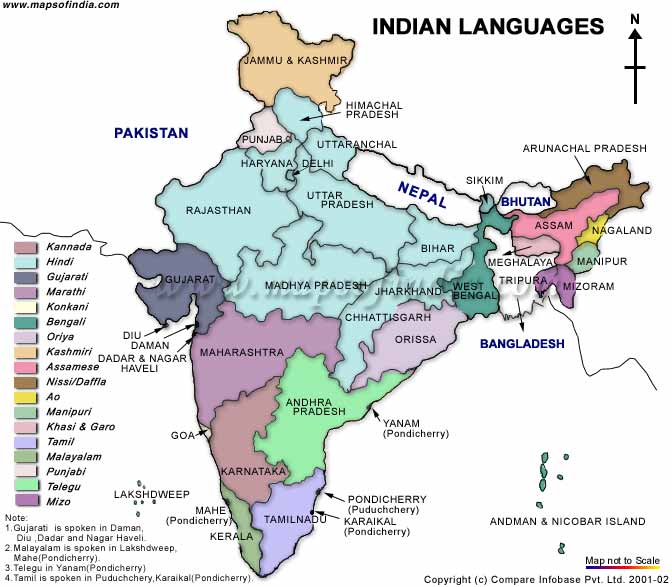

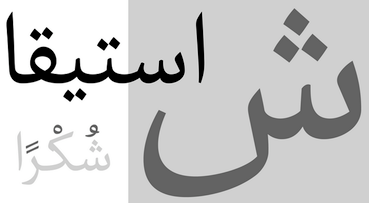 Juan Luis Blanco is a graphic designer, type designer and calligrapher based in Zumaia in the heart of the Basque country. Since 1993, he works as a freelancer graphic designer. In 2013, he obtained an MA in Typeface Design from the University of Reading. Currently he combines calligraphy classes and graphic design with typographic projects that focus on Basque lettering as well as multi script typefaces involving the Latin, Arabic and Tifinagh alphabets.
Juan Luis Blanco is a graphic designer, type designer and calligrapher based in Zumaia in the heart of the Basque country. Since 1993, he works as a freelancer graphic designer. In 2013, he obtained an MA in Typeface Design from the University of Reading. Currently he combines calligraphy classes and graphic design with typographic projects that focus on Basque lettering as well as multi script typefaces involving the Latin, Arabic and Tifinagh alphabets. 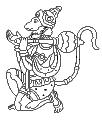 CDAC is Pune's Center for Development of Advanced Computing. They sell typefaces for all Indic languages. They introduced the Indian Script FOnt Code (ISFOC) standards to enable composing Indian language text. Scripts covered include Devnagari (Hindi, Marathi), Gujarati, Punjabi, Kannada, Bengali, Assamese, Tamil, Telugu, Malayalam, Oriya, Sanskrit, Diacritic Roman, Sinhalese, Bhutanese, Nepali, Tibetan.
CDAC is Pune's Center for Development of Advanced Computing. They sell typefaces for all Indic languages. They introduced the Indian Script FOnt Code (ISFOC) standards to enable composing Indian language text. Scripts covered include Devnagari (Hindi, Marathi), Gujarati, Punjabi, Kannada, Bengali, Assamese, Tamil, Telugu, Malayalam, Oriya, Sanskrit, Diacritic Roman, Sinhalese, Bhutanese, Nepali, Tibetan. 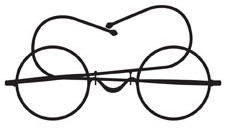 Gandhi's spectacles provided inspiration to Mumbai-based
Gandhi's spectacles provided inspiration to Mumbai-based 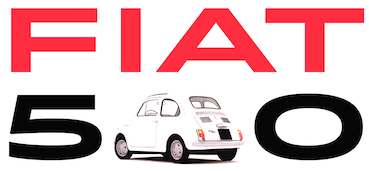 Designer of these typefaces:
Designer of these typefaces:  Indolipi is a multipurpose tool box for indologists and linguists that contains Open Type fonts for most Indian scripts, a Latin font for "instant" transliteration of Indic scripts, and a Unicode based Latin font for writing of scientific texts in a western language containing all transliteration signs used by indologists as well as all presently valid IPA signs. All fonts were made from 2004 until 2006 by Elmar Kniprath (Asien-Afrika institut, University of Hamburg, Germany): e-Bengali OT (for Assamese and Bengali), e-Grantamil (for Grantha Sanskrit, Tamil and Manipravala), e-Grantha OT (for Sanskrit), e-Gujarati OT, e-Kannada OT, e-Malayalam OT (for modern Malayalam), e-Malayalam OTC (for Malayalam with classical orthography), e-Nagari OT (for Sanskrit and Nepali), e-Nagari OTH (for Hindi), e-Nagari OTM (for Marathi), e-Nagari OTR (for Rajasthani), e-Panjabi OT (for Gurmukhi script), e-Sinhala OT, e-Tamil OT (for modern Tamil), e-Tamil OTC (for Tamil with classical orthography), e-Telugu OT, e-Latin Indic (for "instant" Latin transliteration of Indic Unicode texts), e-PhonTranslit UNI (for writing indological texts in a language based on Latin script, also containig all valid IPA signs and a lot of arrows, mathematical and logical signs).
Indolipi is a multipurpose tool box for indologists and linguists that contains Open Type fonts for most Indian scripts, a Latin font for "instant" transliteration of Indic scripts, and a Unicode based Latin font for writing of scientific texts in a western language containing all transliteration signs used by indologists as well as all presently valid IPA signs. All fonts were made from 2004 until 2006 by Elmar Kniprath (Asien-Afrika institut, University of Hamburg, Germany): e-Bengali OT (for Assamese and Bengali), e-Grantamil (for Grantha Sanskrit, Tamil and Manipravala), e-Grantha OT (for Sanskrit), e-Gujarati OT, e-Kannada OT, e-Malayalam OT (for modern Malayalam), e-Malayalam OTC (for Malayalam with classical orthography), e-Nagari OT (for Sanskrit and Nepali), e-Nagari OTH (for Hindi), e-Nagari OTM (for Marathi), e-Nagari OTR (for Rajasthani), e-Panjabi OT (for Gurmukhi script), e-Sinhala OT, e-Tamil OT (for modern Tamil), e-Tamil OTC (for Tamil with classical orthography), e-Telugu OT, e-Latin Indic (for "instant" Latin transliteration of Indic Unicode texts), e-PhonTranslit UNI (for writing indological texts in a language based on Latin script, also containig all valid IPA signs and a lot of arrows, mathematical and logical signs). 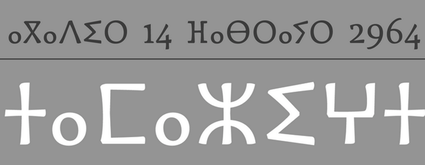 [
[ Indian type designer associated with the
Indian type designer associated with the  The list of new fonts in Windows 7 in 2009:
The list of new fonts in Windows 7 in 2009:  A large free font family released under the Apache license at Google Web Fonts, and developed by Monotype's Steve Matteson and a team of type designers. Designed between 2012 and 2016, this typeface covers over 800 languages and 100 writing scripts.
A large free font family released under the Apache license at Google Web Fonts, and developed by Monotype's Steve Matteson and a team of type designers. Designed between 2012 and 2016, this typeface covers over 800 languages and 100 writing scripts.  [
[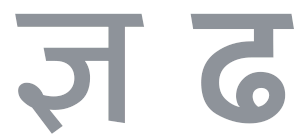 Pria Ravichandran (formerly Pria Adireddi, b. 1984, India) studied type design
Pria Ravichandran (formerly Pria Adireddi, b. 1984, India) studied type design  Typography professor R.K. Joshi's pages. He was born in 1936 in Kolhapur, Maharashtra, India, and died in San Francisco in 2008. He was a poet, calligrapher, designer, researcher, teacher and
Typography professor R.K. Joshi's pages. He was born in 1936 in Kolhapur, Maharashtra, India, and died in San Francisco in 2008. He was a poet, calligrapher, designer, researcher, teacher and 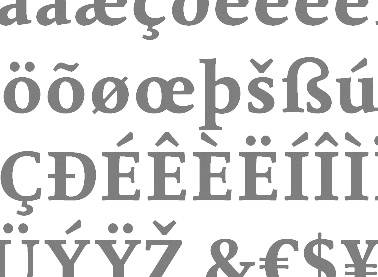 Swiss graphic and type designer who studied first at Ecole des Arts Décoratifs de Genève (2000) and then at the University of Reading (Masters in type design, 2007). He lives and works in Geneva. He created
Swiss graphic and type designer who studied first at Ecole des Arts Décoratifs de Genève (2000) and then at the University of Reading (Masters in type design, 2007). He lives and works in Geneva. He created  German type design student at Reading, UK, 2008, now based in Frankfurt. In 2007, she got a diploma from the Frankfurt Academy of Communication and Design. Her typeface designed for the MA in typeface design at Reading in 2008 is
German type design student at Reading, UK, 2008, now based in Frankfurt. In 2007, she got a diploma from the Frankfurt Academy of Communication and Design. Her typeface designed for the MA in typeface design at Reading in 2008 is